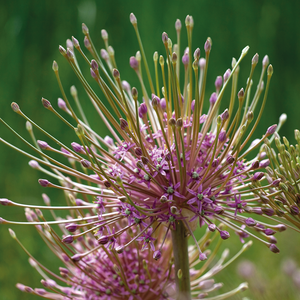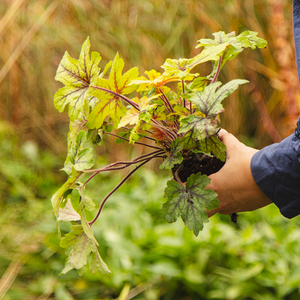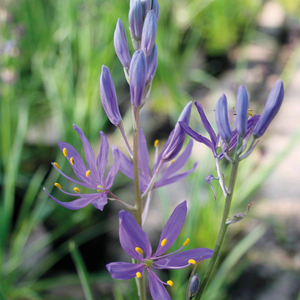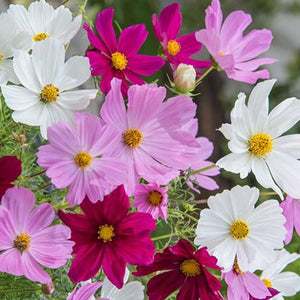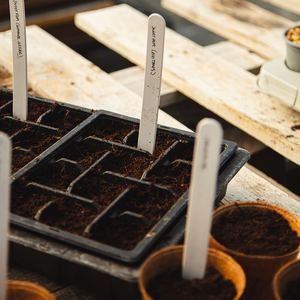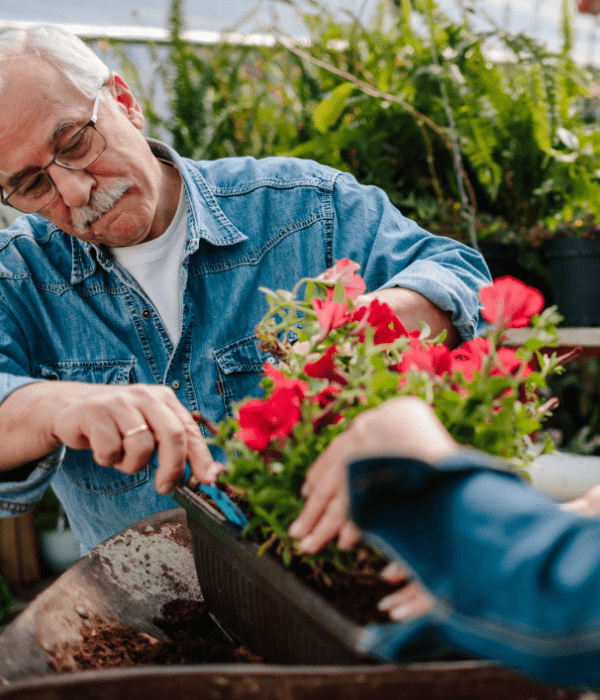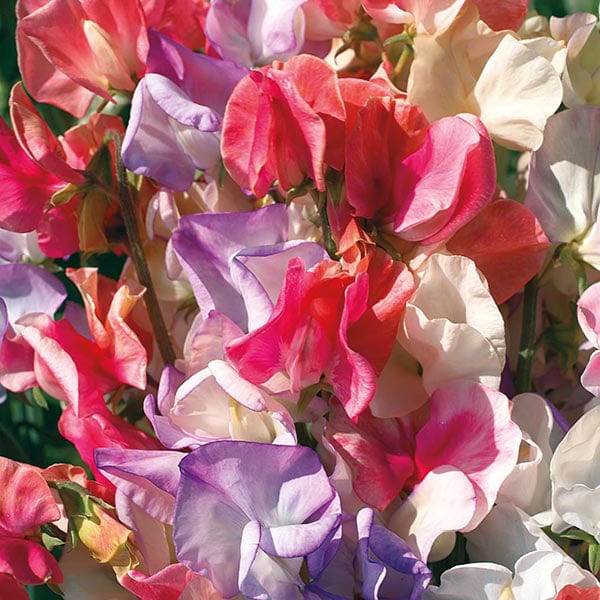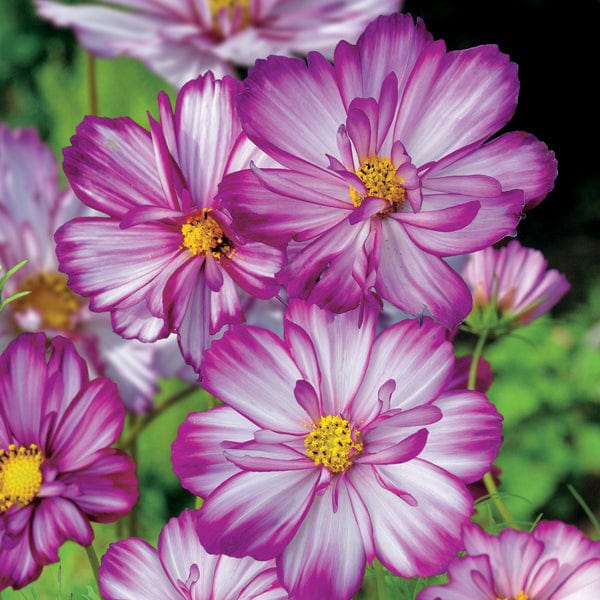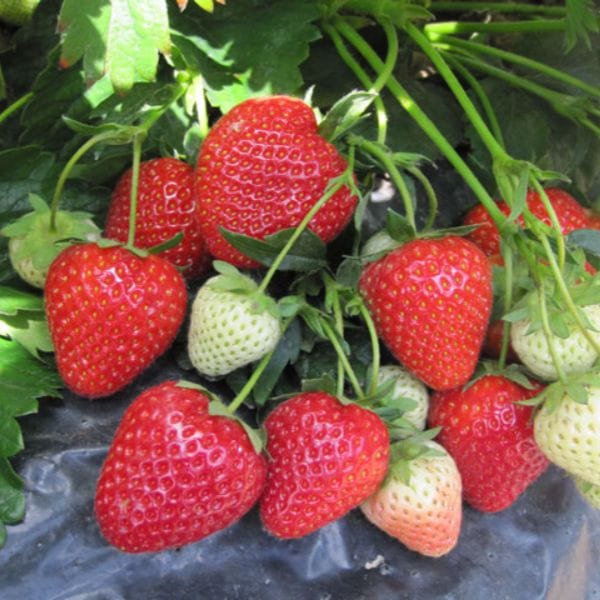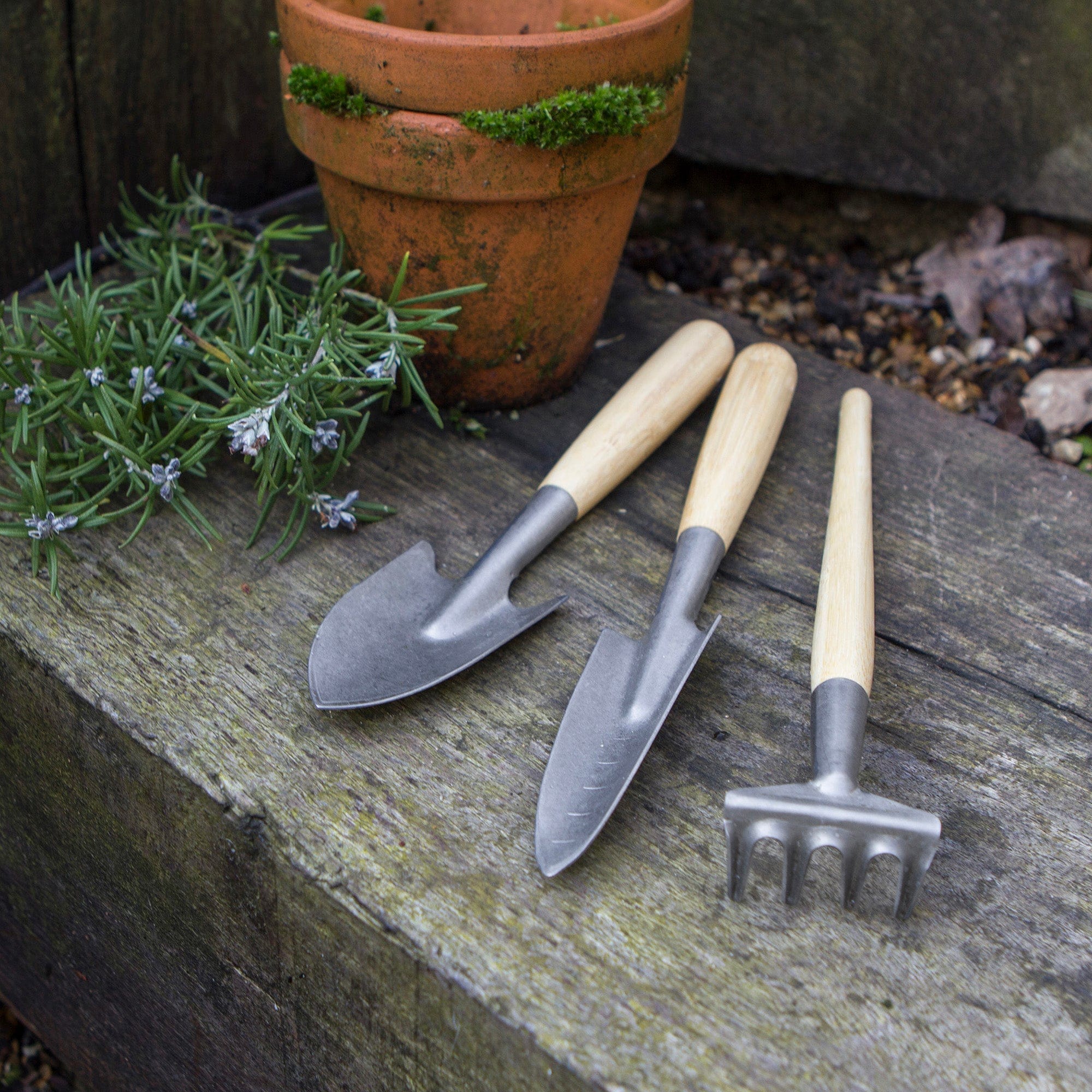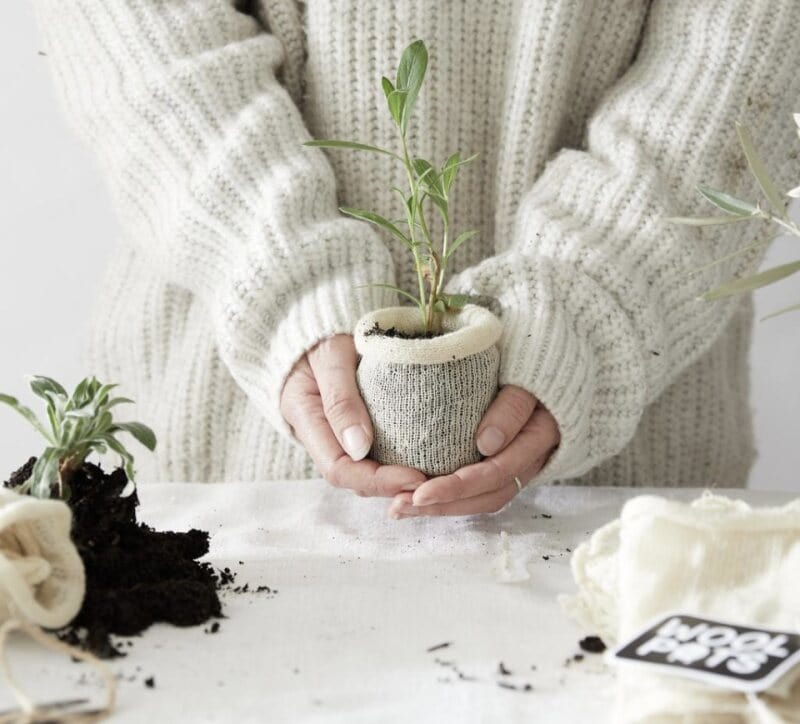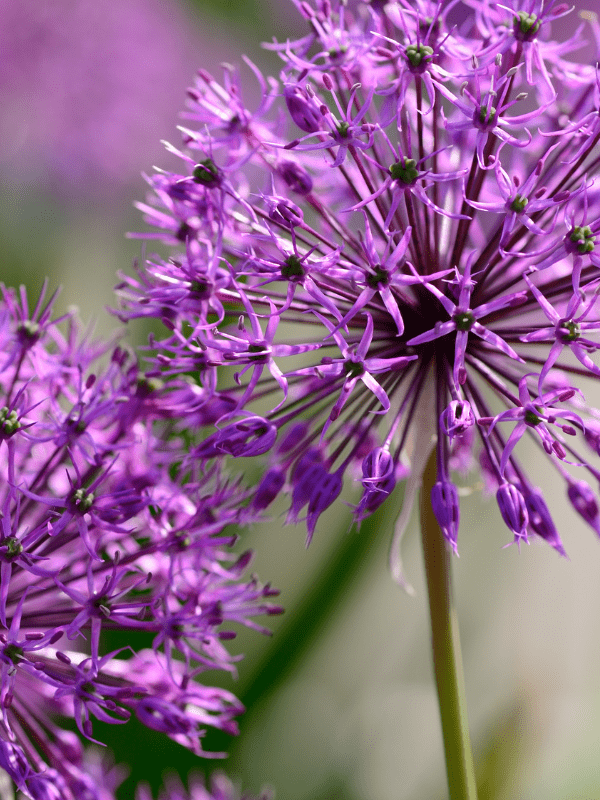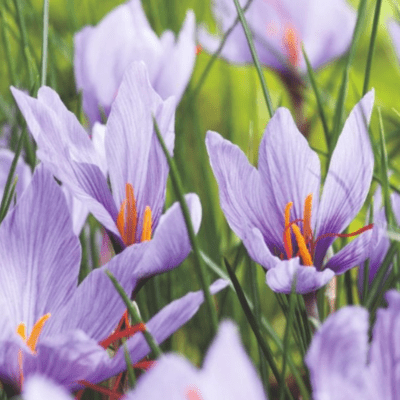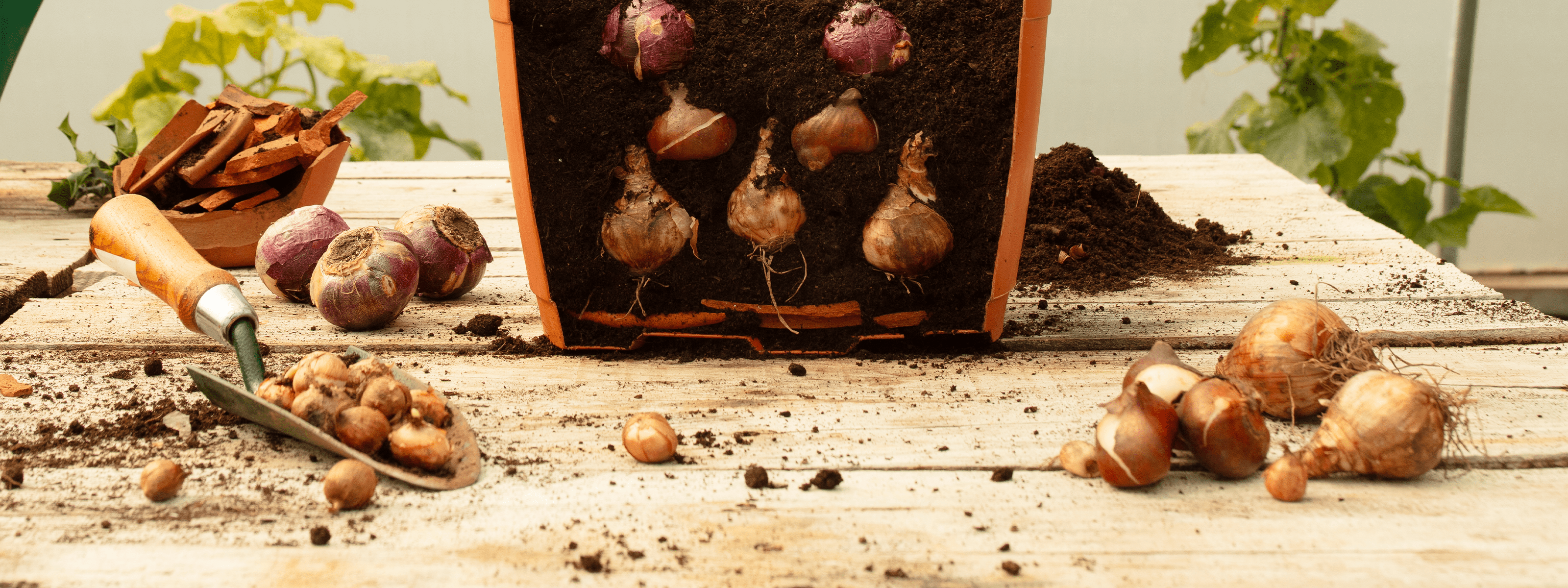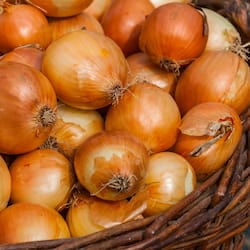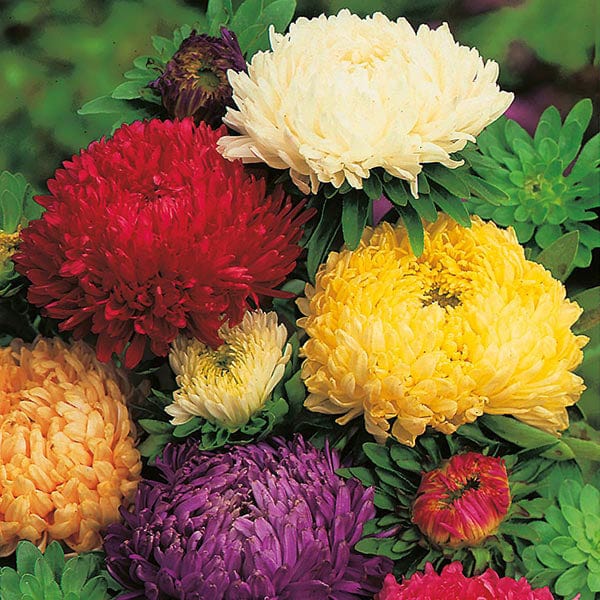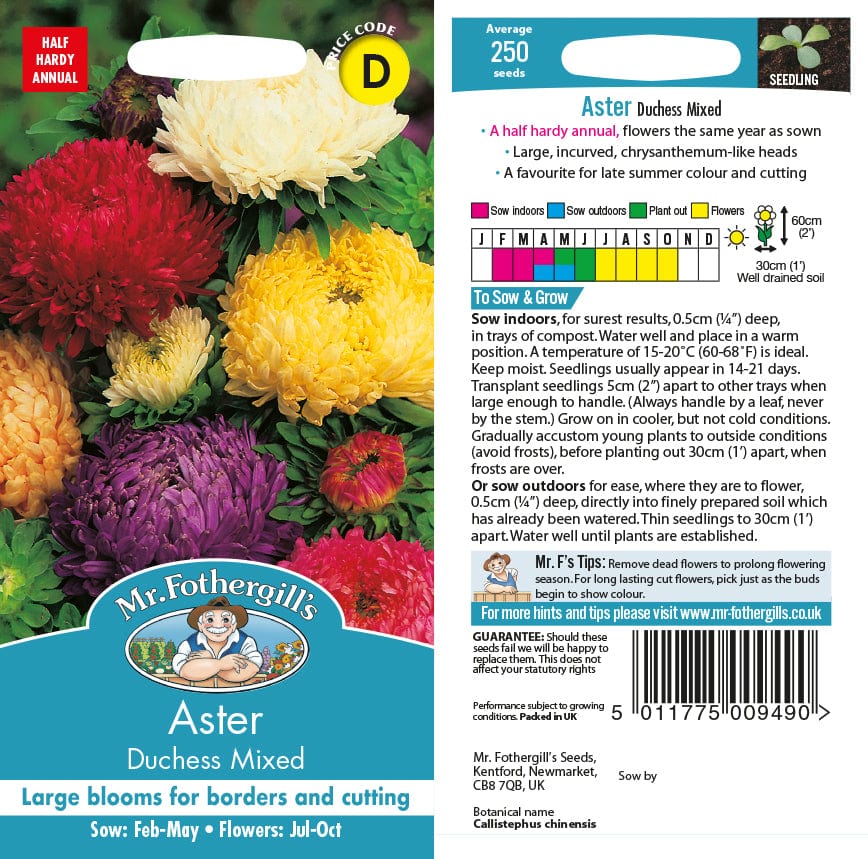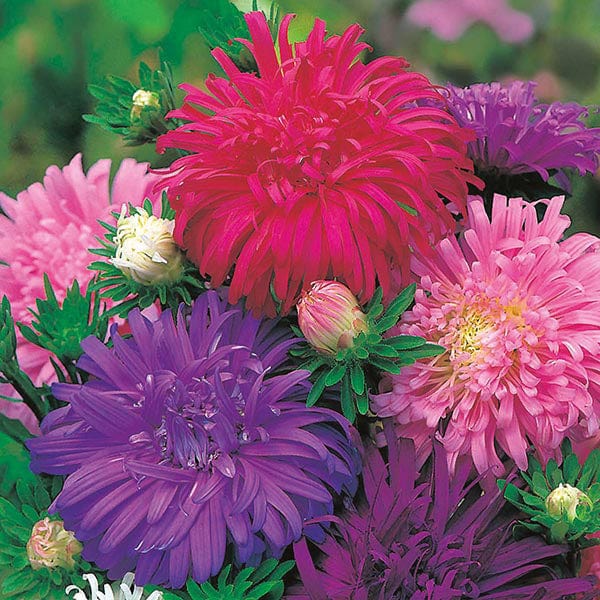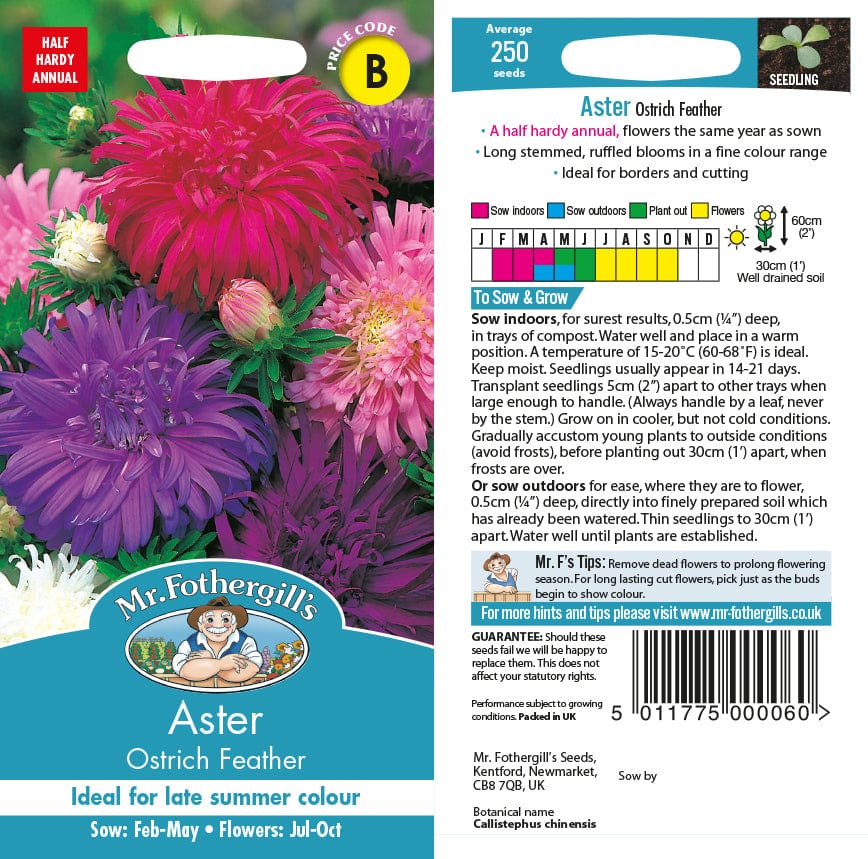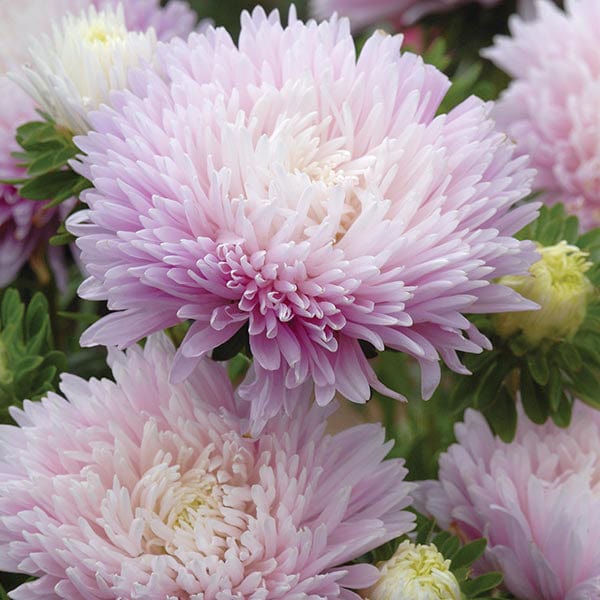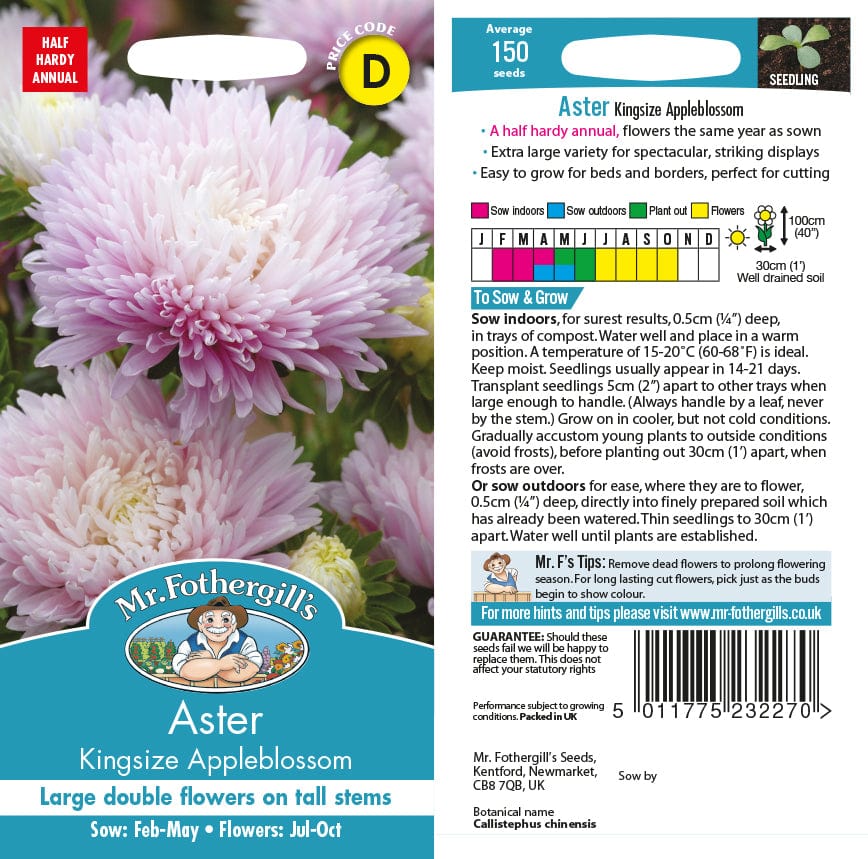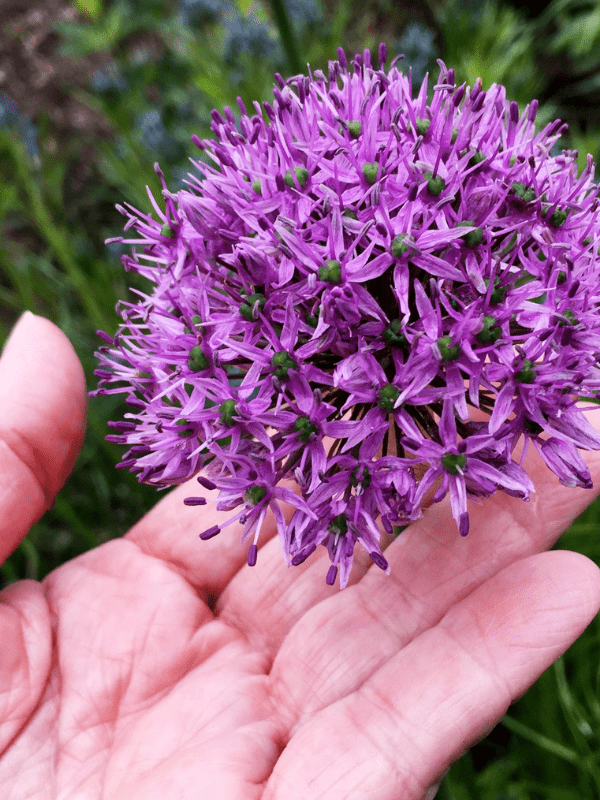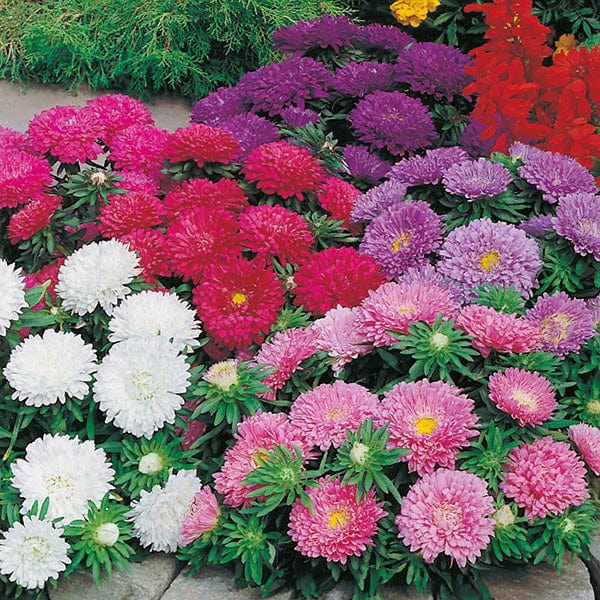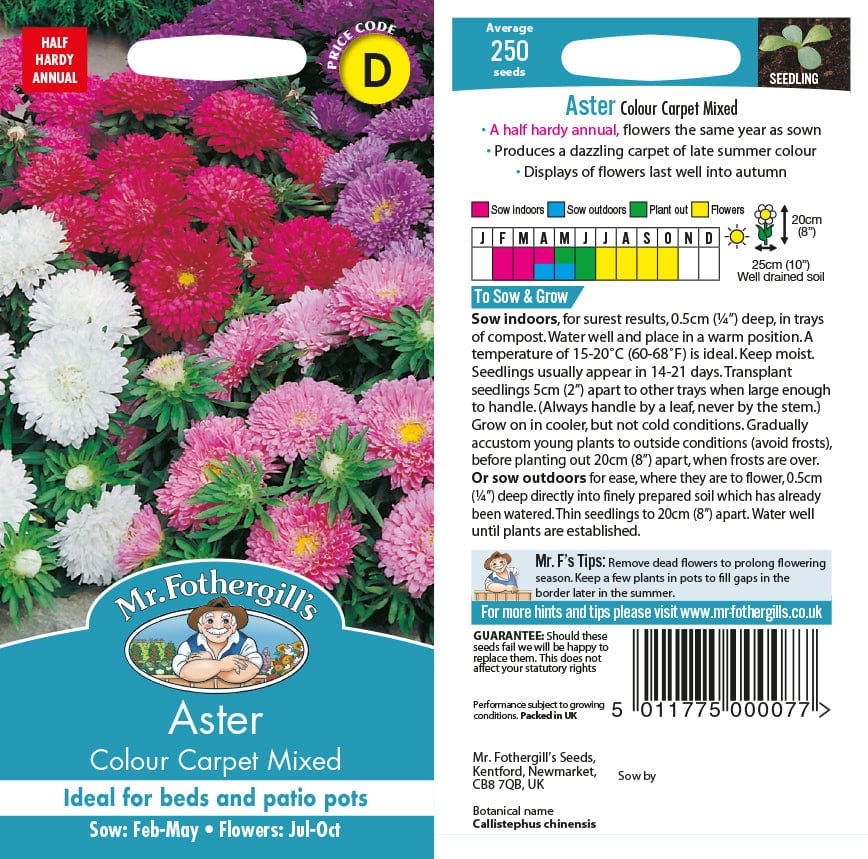Aster Seeds
Vibrant and long-flowering, these half-hardy, bushy, free-branching plants are a valuable addition to the summer flower garden. Also known as 'China Asters', their large, daisy-like blooms are unbeatable as cut flowers and make eye-catching bedding plants with their rich colours. Flower shapes vary greatly and whether resembling pom-poms, incurved peonies or feathery doubles, they all appear in profusion. Flowers can reach up to 15cm(6in) across and are loved by butterflies, bees and other pollinating insects.
{"id":466133844279,"handle":"aster-seeds","title":"Aster Seeds","updated_at":"2025-11-09T12:35:26+00:00","body_html":"\u003cp\u003eVibrant and long-flowering, these half-hardy, bushy, free-branching plants are a valuable addition to the summer flower garden. Also known as 'China Asters', their large, daisy-like blooms are unbeatable as cut flowers and make eye-catching bedding plants with their rich colours. Flower shapes vary greatly and whether resembling pom-poms, incurved peonies or feathery doubles, they all appear in profusion. Flowers can reach up to 15cm(6in) across and are loved by butterflies, bees and other pollinating insects.\u003c\/p\u003e","published_at":"2023-10-31T09:39:05+00:00","sort_order":"best-selling","template_suffix":"","disjunctive":false,"rules":[{"column":"tag","relation":"equals","condition":"Collection:Aster Seeds"}],"published_scope":"global"}[{"id":8334561968439,"title":"Aster Duchess Mixed Seeds","handle":"aster-duchess-mixed-seeds","description":"Large, incurved, chrysanthemum-like heads in strong colours are the hallmark of this upright, strong growing aster seed blend. Duchess Mixed makes a magnificent show in borders from midsummer onwards and is long lasting as a cut flower. \u003cbr\u003e Aster is a half-hardy annual, which flowers the same year as sowing. If desired it can be grown to maturity in pots in an unheated greenhouse for late autumn colour.","published_at":"2023-05-17T14:48:50+01:00","created_at":"2023-05-17T14:48:50+01:00","vendor":"Mr Fothergill's","type":"FLOWER SEEDS","tags":["attribute:suitable for cut flowers","classification:half-hardy annual","Collection:all products (excluding drop ship HARDWARE)","Collection:Aster Seeds","Collection:Flowers To Sow In April","Collection:Flowers To Sow In February","Collection:Flowers To Sow In March","Collection:Flowers To Sow In May","Collection:Mixed Flower Seeds","Collection:MRF all products exc all hardware","colour:mixed","flower:aster","garden type:borders","garden type:cutflower garden","harvest:august","harvest:july","harvest:october","harvest:september","plant class:half hardy annual","position:suitable for partial shade","product family:flower","product family:flower seeds","product type:seeds","seeds:excludes99p","sow indoors:april","sow indoors:february","sow indoors:march","sow outdoors:april","sow outdoors:may"],"price":319,"price_min":319,"price_max":319,"available":true,"price_varies":false,"compare_at_price":319,"compare_at_price_min":319,"compare_at_price_max":319,"compare_at_price_varies":false,"variants":[{"id":45382034751799,"title":"Default Title","option1":"Default Title","option2":null,"option3":null,"sku":"16184","requires_shipping":true,"taxable":false,"featured_image":null,"available":true,"name":"Aster Duchess Mixed Seeds","public_title":null,"options":["Default Title"],"price":319,"weight":4,"compare_at_price":319,"inventory_management":"shopify","barcode":"5011775469485","requires_selling_plan":false,"selling_plan_allocations":[],"quantity_rule":{"min":1,"max":null,"increment":1}}],"images":["\/\/mr-fothergills.co.uk\/cdn\/shop\/files\/16184z_796cea68-898c-493d-9baf-4c7865348c5b.jpg?v=1761134699","\/\/mr-fothergills.co.uk\/cdn\/shop\/files\/23798_20Aster_20Duchess_20Mixed.jpg?v=1761134699"],"featured_image":"\/\/mr-fothergills.co.uk\/cdn\/shop\/files\/16184z_796cea68-898c-493d-9baf-4c7865348c5b.jpg?v=1761134699","options":["Title"],"media":[{"alt":"Aster Duchess Mixed Seeds","id":63745119682938,"position":1,"preview_image":{"aspect_ratio":1.0,"height":600,"width":600,"src":"\/\/mr-fothergills.co.uk\/cdn\/shop\/files\/16184z_796cea68-898c-493d-9baf-4c7865348c5b.jpg?v=1761134699"},"aspect_ratio":1.0,"height":600,"media_type":"image","src":"\/\/mr-fothergills.co.uk\/cdn\/shop\/files\/16184z_796cea68-898c-493d-9baf-4c7865348c5b.jpg?v=1761134699","width":600},{"alt":"Aster Duchess Mixed Seeds","id":65567376212346,"position":2,"preview_image":{"aspect_ratio":1.01,"height":859,"width":868,"src":"\/\/mr-fothergills.co.uk\/cdn\/shop\/files\/23798_20Aster_20Duchess_20Mixed.jpg?v=1761134699"},"aspect_ratio":1.01,"height":859,"media_type":"image","src":"\/\/mr-fothergills.co.uk\/cdn\/shop\/files\/23798_20Aster_20Duchess_20Mixed.jpg?v=1761134699","width":868}],"requires_selling_plan":false,"selling_plan_groups":[],"content":"Large, incurved, chrysanthemum-like heads in strong colours are the hallmark of this upright, strong growing aster seed blend. Duchess Mixed makes a magnificent show in borders from midsummer onwards and is long lasting as a cut flower. \u003cbr\u003e Aster is a half-hardy annual, which flowers the same year as sowing. If desired it can be grown to maturity in pots in an unheated greenhouse for late autumn colour."},{"id":8334245134647,"title":"Aster Ostrich Feather Seeds","handle":"aster-ostrich-feather-seeds","description":"\u003cp\u003eLarge double blooms of recurving petals in rich boudoir colours. Often grown as cut flowers in Victorian times. It is extremely graceful and has a branching habit which makes it a great border plant.\u003c\/p\u003e\u003cp\u003e\u003cbr\u003e\u003c\/p\u003e","published_at":"2023-05-17T12:55:07+01:00","created_at":"2023-05-17T12:55:07+01:00","vendor":"Mr Fothergill's","type":"FLOWER SEEDS","tags":["attribute:suitable for cut flowers","classification:half-hardy annual","Collection:all products (excluding drop ship HARDWARE)","Collection:Aster Seeds","Collection:Flowers To Sow In April","Collection:Flowers To Sow In February","Collection:Flowers To Sow In March","Collection:Flowers To Sow In May","Collection:Mixed Flower Seeds","Collection:MRF all products exc all hardware","colour:mixed","flower:aster","garden type:borders","garden type:cutflower garden","harvest:august","harvest:july","harvest:october","harvest:september","plant class:half hardy annual","position:suitable for partial shade","product family:flower","product family:flower seeds","product type:seeds","seeds:excludes99p","sow indoors:april","sow indoors:february","sow indoors:march","sow outdoors:april","sow outdoors:may"],"price":249,"price_min":249,"price_max":249,"available":true,"price_varies":false,"compare_at_price":249,"compare_at_price_min":249,"compare_at_price_max":249,"compare_at_price_varies":false,"variants":[{"id":45379577577783,"title":"Default Title","option1":"Default Title","option2":null,"option3":null,"sku":"10115","requires_shipping":true,"taxable":false,"featured_image":null,"available":true,"name":"Aster Ostrich Feather Seeds","public_title":null,"options":["Default Title"],"price":249,"weight":4,"compare_at_price":249,"inventory_management":"shopify","barcode":"5011775469508","requires_selling_plan":false,"selling_plan_allocations":[],"quantity_rule":{"min":1,"max":null,"increment":1}}],"images":["\/\/mr-fothergills.co.uk\/cdn\/shop\/files\/10115z_71758d0c-ef14-4dea-b577-7bb388df0c02.jpg?v=1761072580","\/\/mr-fothergills.co.uk\/cdn\/shop\/files\/11413_20Aster_20Ostrich_20Feather.jpg?v=1761072580"],"featured_image":"\/\/mr-fothergills.co.uk\/cdn\/shop\/files\/10115z_71758d0c-ef14-4dea-b577-7bb388df0c02.jpg?v=1761072580","options":["Title"],"media":[{"alt":"Aster Ostrich Feather Seeds","id":63745009451386,"position":1,"preview_image":{"aspect_ratio":1.0,"height":600,"width":600,"src":"\/\/mr-fothergills.co.uk\/cdn\/shop\/files\/10115z_71758d0c-ef14-4dea-b577-7bb388df0c02.jpg?v=1761072580"},"aspect_ratio":1.0,"height":600,"media_type":"image","src":"\/\/mr-fothergills.co.uk\/cdn\/shop\/files\/10115z_71758d0c-ef14-4dea-b577-7bb388df0c02.jpg?v=1761072580","width":600},{"alt":"Aster Ostrich Feather Seeds","id":65596982329722,"position":2,"preview_image":{"aspect_ratio":1.01,"height":859,"width":868,"src":"\/\/mr-fothergills.co.uk\/cdn\/shop\/files\/11413_20Aster_20Ostrich_20Feather.jpg?v=1761072580"},"aspect_ratio":1.01,"height":859,"media_type":"image","src":"\/\/mr-fothergills.co.uk\/cdn\/shop\/files\/11413_20Aster_20Ostrich_20Feather.jpg?v=1761072580","width":868}],"requires_selling_plan":false,"selling_plan_groups":[],"content":"\u003cp\u003eLarge double blooms of recurving petals in rich boudoir colours. Often grown as cut flowers in Victorian times. It is extremely graceful and has a branching habit which makes it a great border plant.\u003c\/p\u003e\u003cp\u003e\u003cbr\u003e\u003c\/p\u003e"},{"id":8334689272119,"title":"Aster Kingsize Appleblossom Seeds","handle":"aster-kingsize-appleblossom-seeds","description":"\u003cp\u003e\u003cstrong\u003eAster Kingsize Appleblossom Seeds\u003c\/strong\u003e are the perfect choice for gardeners looking to create truly spectacular and striking displays. This extra-large variety produces magnificent blooms in soft, blush tones reminiscent of delicate apple blossoms, making it a standout feature in any garden.\u003c\/p\u003e\u003cp\u003eRenowned for their ease of growth, \u003cstrong\u003eAster Kingsize Appleblossom\u003c\/strong\u003e is ideal for both experienced gardeners and beginners. These versatile flowers thrive in beds and borders, where their lush blooms add volume and vibrant beauty. Their long stems and elegant blossoms also make them a favourite for cutting, allowing you to enjoy their charm indoors as part of a fresh floral arrangement.\u003c\/p\u003e\u003cp\u003eThis variety is not only beautiful but also highly reliable, with a robust growth habit that ensures abundant flowering throughout the season. Whether planted in sunny garden beds, used to fill in gaps in borders, or cultivated specifically for bouquets, \u003cstrong\u003eAster Kingsize Appleblossom\u003c\/strong\u003e will reward you with a profusion of exquisite flowers.\u003c\/p\u003e\u003cp\u003eBring elegance and drama to your garden with \u003cstrong\u003eAster Kingsize Appleblossom Seeds\u003c\/strong\u003e. Their effortless growth and show-stopping blooms make them a must-have addition to any floral collection.\u003c\/p\u003e","published_at":"2023-05-17T15:29:12+01:00","created_at":"2023-05-17T15:29:12+01:00","vendor":"Mr Fothergill's","type":"FLOWER SEEDS","tags":["attribute:suitable for cut flowers","classification:half-hardy annual","Collection:all products (excluding drop ship HARDWARE)","Collection:Aster Seeds","Collection:Flowers To Sow In April","Collection:Flowers To Sow In February","Collection:Flowers To Sow In June","Collection:Flowers To Sow In March","Collection:Flowers To Sow In May","Collection:MRF all products exc all hardware","colour:pink","flower:aster","garden type:bedding","garden type:borders","garden type:cutflower garden","harvest:august","harvest:july","harvest:october","harvest:september","High Priority","plant class:half hardy annual","position:suitable for partial shade","product family:flower","product family:flower seeds","product type:seeds","seeds:excludes99p","sow indoors:april","sow indoors:february","sow indoors:march","sow outdoors:april","sow outdoors:june","sow outdoors:may"],"price":319,"price_min":319,"price_max":319,"available":true,"price_varies":false,"compare_at_price":319,"compare_at_price_min":319,"compare_at_price_max":319,"compare_at_price_varies":false,"variants":[{"id":45383179174199,"title":"Default Title","option1":"Default Title","option2":null,"option3":null,"sku":"23227","requires_shipping":true,"taxable":false,"featured_image":null,"available":true,"name":"Aster Kingsize Appleblossom Seeds","public_title":null,"options":["Default Title"],"price":319,"weight":4,"compare_at_price":319,"inventory_management":"shopify","barcode":"5011775469492","requires_selling_plan":false,"selling_plan_allocations":[],"quantity_rule":{"min":1,"max":null,"increment":1}}],"images":["\/\/mr-fothergills.co.uk\/cdn\/shop\/files\/23227z_ae423fc0-8f96-4359-93bc-31344e7e135e.jpg?v=1761139757","\/\/mr-fothergills.co.uk\/cdn\/shop\/files\/13805_20Aster_20Kingsize_20Appleblossom.jpg?v=1761139757"],"featured_image":"\/\/mr-fothergills.co.uk\/cdn\/shop\/files\/23227z_ae423fc0-8f96-4359-93bc-31344e7e135e.jpg?v=1761139757","options":["Title"],"media":[{"alt":"Aster Kingsize Appleblossom Seeds","id":63745106641274,"position":1,"preview_image":{"aspect_ratio":1.0,"height":600,"width":600,"src":"\/\/mr-fothergills.co.uk\/cdn\/shop\/files\/23227z_ae423fc0-8f96-4359-93bc-31344e7e135e.jpg?v=1761139757"},"aspect_ratio":1.0,"height":600,"media_type":"image","src":"\/\/mr-fothergills.co.uk\/cdn\/shop\/files\/23227z_ae423fc0-8f96-4359-93bc-31344e7e135e.jpg?v=1761139757","width":600},{"alt":"Aster Kingsize Appleblossom Seeds","id":65594752860538,"position":2,"preview_image":{"aspect_ratio":1.01,"height":859,"width":868,"src":"\/\/mr-fothergills.co.uk\/cdn\/shop\/files\/13805_20Aster_20Kingsize_20Appleblossom.jpg?v=1761139757"},"aspect_ratio":1.01,"height":859,"media_type":"image","src":"\/\/mr-fothergills.co.uk\/cdn\/shop\/files\/13805_20Aster_20Kingsize_20Appleblossom.jpg?v=1761139757","width":868}],"requires_selling_plan":false,"selling_plan_groups":[],"content":"\u003cp\u003e\u003cstrong\u003eAster Kingsize Appleblossom Seeds\u003c\/strong\u003e are the perfect choice for gardeners looking to create truly spectacular and striking displays. This extra-large variety produces magnificent blooms in soft, blush tones reminiscent of delicate apple blossoms, making it a standout feature in any garden.\u003c\/p\u003e\u003cp\u003eRenowned for their ease of growth, \u003cstrong\u003eAster Kingsize Appleblossom\u003c\/strong\u003e is ideal for both experienced gardeners and beginners. These versatile flowers thrive in beds and borders, where their lush blooms add volume and vibrant beauty. Their long stems and elegant blossoms also make them a favourite for cutting, allowing you to enjoy their charm indoors as part of a fresh floral arrangement.\u003c\/p\u003e\u003cp\u003eThis variety is not only beautiful but also highly reliable, with a robust growth habit that ensures abundant flowering throughout the season. Whether planted in sunny garden beds, used to fill in gaps in borders, or cultivated specifically for bouquets, \u003cstrong\u003eAster Kingsize Appleblossom\u003c\/strong\u003e will reward you with a profusion of exquisite flowers.\u003c\/p\u003e\u003cp\u003eBring elegance and drama to your garden with \u003cstrong\u003eAster Kingsize Appleblossom Seeds\u003c\/strong\u003e. Their effortless growth and show-stopping blooms make them a must-have addition to any floral collection.\u003c\/p\u003e"},{"id":8336676225335,"title":"Aster Colour Carpet Mixed","handle":"aster-colour-carpet-mixed","description":"\u003cp\u003e\u003cstrong\u003eAster Colour Carpet Mixed\u003c\/strong\u003e is a delightful and versatile double-flowered mixture that brings vibrant colour and charm to any garden setting. This popular mix is perfect for creating eye-catching displays in border edges, tubs, and window boxes, making it an excellent choice for gardeners looking to add a splash of colour with minimal effort.\u003c\/p\u003e\u003cp\u003eThe compact, low-growing plants produce a stunning array of blooms in a variety of bright and cheerful colours, including shades of pink, purple, white, and more. The abundance of double flowers creates a dense 'carpet' of colour, making \u003cstrong\u003eAster Colour Carpet Mixed\u003c\/strong\u003e an ideal choice for filling gaps in flower beds or creating striking container displays on patios and balconies.\u003c\/p\u003e\u003cp\u003eHighly valued for its versatility and ease of growth, \u003cstrong\u003eAster Colour Carpet Mixed\u003c\/strong\u003e thrives in both sunny and partially shaded areas. It is perfect for small spaces, urban gardens, or enhancing larger flower beds with pops of vibrant hues. The long-lasting blooms make it a fantastic choice for gardeners who want continuous colour throughout the growing season.\u003c\/p\u003e\u003cp\u003eIn addition to its aesthetic appeal, \u003cstrong\u003eAster Colour Carpet Mixed\u003c\/strong\u003e is also low-maintenance and suitable for both beginner and experienced gardeners. With regular watering and well-drained soil, these resilient plants will bloom prolifically, requiring little more than basic care to thrive.\u003c\/p\u003e\u003cp\u003eWhether you’re creating a cheerful border edge, brightening up a windowsill, or adding texture to your container garden, \u003cstrong\u003eAster Colour Carpet Mixed\u003c\/strong\u003e offers exceptional value and stunning results. Its vibrant and dense blooms will effortlessly enhance the beauty of your outdoor spaces, providing a delightful and colourful display throughout the season.\u003c\/p\u003e","published_at":"2023-11-03T00:09:39+00:00","created_at":"2023-05-18T16:03:25+01:00","vendor":"Mr Fothergill's","type":"FLOWER SEEDS","tags":["classification:half-hardy annual","Collection:all products (excluding drop ship HARDWARE)","Collection:Aster Seeds","Collection:Flowers To Sow In April","Collection:Flowers To Sow In February","Collection:Flowers To Sow In March","Collection:Flowers To Sow In May","Collection:Mixed Flower Seeds","Collection:MRF all products exc all hardware","colour:mixed","flower:aster","garden type:borders","garden type:patio \u0026 containers","grow in:suitable for pots \u0026 containers","harvest:august","harvest:july","harvest:october","harvest:september","plant class:half hardy annual","position:suitable for partial shade","product family:flower","product family:flower seeds","product type:seeds","seeds:excludes99p","sow indoors:april","sow indoors:february","sow indoors:march","sow outdoors:april","sow outdoors:may"],"price":319,"price_min":319,"price_max":319,"available":true,"price_varies":false,"compare_at_price":319,"compare_at_price_min":319,"compare_at_price_max":319,"compare_at_price_varies":false,"variants":[{"id":45394549899575,"title":"Default Title","option1":"Default Title","option2":null,"option3":null,"sku":"10461","requires_shipping":true,"taxable":false,"featured_image":null,"available":true,"name":"Aster Colour Carpet Mixed","public_title":null,"options":["Default Title"],"price":319,"weight":4,"compare_at_price":319,"inventory_management":"shopify","barcode":"5011775469478","requires_selling_plan":false,"selling_plan_allocations":[],"quantity_rule":{"min":1,"max":null,"increment":1}}],"images":["\/\/mr-fothergills.co.uk\/cdn\/shop\/files\/10461z_2845db69-ddfb-4a68-bd92-c297359dcc20.jpg?v=1761113357","\/\/mr-fothergills.co.uk\/cdn\/shop\/files\/17606_20Aster_20Colour_20carpet_20mixed.jpg?v=1761113357"],"featured_image":"\/\/mr-fothergills.co.uk\/cdn\/shop\/files\/10461z_2845db69-ddfb-4a68-bd92-c297359dcc20.jpg?v=1761113357","options":["Title"],"media":[{"alt":"Aster Colour Carpet Mixed","id":63745735426426,"position":1,"preview_image":{"aspect_ratio":1.0,"height":600,"width":600,"src":"\/\/mr-fothergills.co.uk\/cdn\/shop\/files\/10461z_2845db69-ddfb-4a68-bd92-c297359dcc20.jpg?v=1761113357"},"aspect_ratio":1.0,"height":600,"media_type":"image","src":"\/\/mr-fothergills.co.uk\/cdn\/shop\/files\/10461z_2845db69-ddfb-4a68-bd92-c297359dcc20.jpg?v=1761113357","width":600},{"alt":"Aster Colour Carpet Mixed","id":65579760058746,"position":2,"preview_image":{"aspect_ratio":1.01,"height":859,"width":868,"src":"\/\/mr-fothergills.co.uk\/cdn\/shop\/files\/17606_20Aster_20Colour_20carpet_20mixed.jpg?v=1761113357"},"aspect_ratio":1.01,"height":859,"media_type":"image","src":"\/\/mr-fothergills.co.uk\/cdn\/shop\/files\/17606_20Aster_20Colour_20carpet_20mixed.jpg?v=1761113357","width":868}],"requires_selling_plan":false,"selling_plan_groups":[],"content":"\u003cp\u003e\u003cstrong\u003eAster Colour Carpet Mixed\u003c\/strong\u003e is a delightful and versatile double-flowered mixture that brings vibrant colour and charm to any garden setting. This popular mix is perfect for creating eye-catching displays in border edges, tubs, and window boxes, making it an excellent choice for gardeners looking to add a splash of colour with minimal effort.\u003c\/p\u003e\u003cp\u003eThe compact, low-growing plants produce a stunning array of blooms in a variety of bright and cheerful colours, including shades of pink, purple, white, and more. The abundance of double flowers creates a dense 'carpet' of colour, making \u003cstrong\u003eAster Colour Carpet Mixed\u003c\/strong\u003e an ideal choice for filling gaps in flower beds or creating striking container displays on patios and balconies.\u003c\/p\u003e\u003cp\u003eHighly valued for its versatility and ease of growth, \u003cstrong\u003eAster Colour Carpet Mixed\u003c\/strong\u003e thrives in both sunny and partially shaded areas. It is perfect for small spaces, urban gardens, or enhancing larger flower beds with pops of vibrant hues. The long-lasting blooms make it a fantastic choice for gardeners who want continuous colour throughout the growing season.\u003c\/p\u003e\u003cp\u003eIn addition to its aesthetic appeal, \u003cstrong\u003eAster Colour Carpet Mixed\u003c\/strong\u003e is also low-maintenance and suitable for both beginner and experienced gardeners. With regular watering and well-drained soil, these resilient plants will bloom prolifically, requiring little more than basic care to thrive.\u003c\/p\u003e\u003cp\u003eWhether you’re creating a cheerful border edge, brightening up a windowsill, or adding texture to your container garden, \u003cstrong\u003eAster Colour Carpet Mixed\u003c\/strong\u003e offers exceptional value and stunning results. Its vibrant and dense blooms will effortlessly enhance the beauty of your outdoor spaces, providing a delightful and colourful display throughout the season.\u003c\/p\u003e"}]Filters
Filters
4 products
